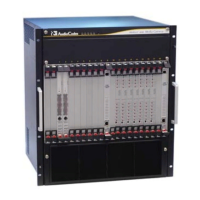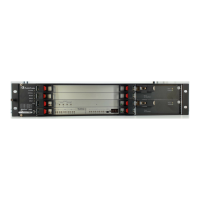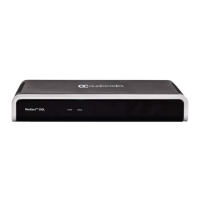Version 6.6 105 Mediant 2000
User's Manual 11. Network
11 Network
This section describes the network-related configuration.
11.1 Ethernet Interface Configuration
The device's Ethernet connection can be configured, using the ini file parameter
EthernetPhyConfiguration, to one of the following modes:
Manual:
• 10Base-T Half-Duplex or 10Base-T Full-Duplex
• 100Base-TX Half-Duplex or 100Base-TX Full-Duplex
Auto-Negotiation: chooses common transmission parameters such as speed and
duplex mode
The Ethernet connection should be configured according to the following recommended
guidelines:
When the device's Ethernet port is configured for Auto-Negotiation, the opposite port
must also operate in Auto-Negotiation. Auto-Negotiation falls back to Half-Duplex
mode when the opposite port is not in Auto-Negotiation mode, but the speed in this
mode is always configured correctly. Configuring the device to Auto-Negotiation mode
while the opposite port is set manually to Full-Duplex is invalid as it causes the device
to fall back to Half-Duplex mode while the opposite port is Full-Duplex. Any mismatch
configuration can yield unexpected functioning of the Ethernet connection.
When configuring the device's Ethernet port manually, the same mode (i.e., Half
Duplex or Full Duplex) and speed must be configured on the remote Ethernet port. In
addition, when the device's Ethernet port is configured manually, it is invalid to set the
remote port to Auto-Negotiation. Any mismatch configuration can yield unexpected
functioning of the Ethernet connection.
It's recommended to configure the port for best performance and highest bandwidth
(i.e., Full Duplex with 100Base-TX), but at the same time adhering to the guidelines
listed above.
Note: For remote configuration, the device should be in the correct Ethernet setting
prior to the time this parameter takes effect. When, for example, the device is
configured using BootP/TFTP, the device performs many Ethernet-based
transactions prior to reading the ini file containing this device configuration parameter.
To resolve this problem, the device always uses the last Ethernet setup mode
configured. In this way, if you want to configure the device to operate in a new
network environment in which the current Ethernet setting of the device is invalid, you
should first modify this parameter in the current network so that the new setting holds
next time the device is restarted. After reconfiguration has completed, connect the
device to the new network and restart it. As a result, the remote configuration process
that occurs in the new network uses a valid Ethernet configuration
11.2 Ethernet Interface Redundancy
The device supports an Ethernet redundancy scheme. At the beginning of the start-up
procedure, the device tests whether the ‘primary’ Ethernet interface is connected, by
checking the existence of the Ethernet link carrier. If it's connected, the start-up procedure
commences as usual. If not, the start-up application tries the ‘secondary’ Ethernet
interface. If this interface is connected, the whole start-up procedure is performed using it.
If both interfaces are not connected, the start-up procedure commences using the
parameters, tables, and software residing on the device's non-volatile memory. Note that

